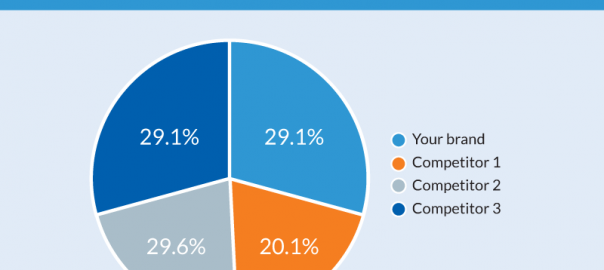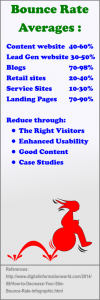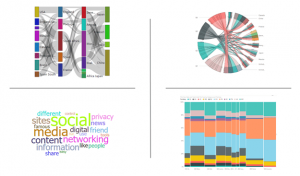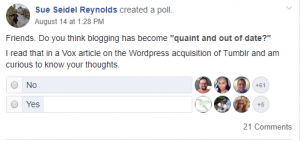There’s a difference between knowing what social media metrics to track and knowing which metrics are not meaningful when measuring social media ROI. Differentiating between the metrics that are vanity and useful will allow you to prove the importance of social media for your business.
![]()
What it all comes down to is being able to answer this question:
“Does that social media metric help you make important business decisions?”
If it does, then it’s an important social media metric to measure. If it doesn’t, then it’s a vanity metric that doesn’t prove social media ROI.
With that in mind, I have put together 5 social media metrics you can stop tracking and what metrics to measure instead.
5 social media metrics to stop tracking for your social media ROI
1) Engagement

Engagement refers to how much people interact with a brand’s social media posts, this “metric” gets thrown around a lot if you work in social media —in fact, too much. Unfortunately, just tracking engagement is too vague. If you are still tracking engagement you’re missing out on tracking proper social media metrics that show you exactly what kind of user behavior is happening when someone engages with your social media posts. It doesn’t allow you to know whether or not that behavior is positive or negative because you’ll never know if your social media engagement is actually good or bad.
If you must track engagement, track your engagement rate and sentiment instead. In Twitter Analytics, this you can track your Twitter Engagement Rate, it is a metric that is available for free to track. It’s a better metric to track than just engagement because it is a directional metric, if you increase your Twitter engagement rate other good things start to happen to your social media KPIs. What this metric tells you is out of the number of people who sees your tweet, how many of them actually engaged with your tweet. The engagements tracked are:
- Link clicks
- Favorites
- Retweets
- Replies
- Embedded media clicks
- Detail expands
- Shared via email
- Permalink clicks
- User profile clicks
- Follows
If you want to know whether or not your social media engagement is positive or negative, Sentiment refers to the emotion behind a social media interaction. It’s a way to measure the tone of the conversion and adds important context to social conversations. It’s a more important social media metric to track than engagement because without it, measuring your social media engagement can be misleading.
Measuring sentiment on your own can be quite time consuming, depending on the size of the conversation. You can use tools like uberVU via Hootsuite platform to track your social media sentiment. It uses a powerful automation tool to determine sentiment, which is based on a machine learning technology.
2) Klout
Klout is a brilliant idea, but at the end of the day tracking Klout doesn’t do very much for growing your business. Klout is a vanity social media metric that looks good on the outside but lacks substance. Your Klout Score is a number between 1-100 and it represents your influence, the higher your Klout Score the more influential you are. Don’t get me wrong this is a great metric for personal use, but for a business it’s less relevant. But, why did people track Klout in the first place? To discover social media influencers to increase their social reach via these influencers.
However, Klout can be easily gamed through various social media automation tools that help increase your following or automate your social media posts. Which is why tracking Klout can be misleading. Instead, if you must gather a list of social media influencers, leave it up to influencer marketing agencies who create various social media influencer lists like Forbes’.
3) Facebook comments
The number of comments you receive on your Facebook posts used to determine whether or not your Facebook posts are doing well or not. But, with so many spam comments it’s difficult to determine whether or not the 100 comments on your Facebook posts are properly representing your engagement rate. Instead, track your conversation rate on Facebook instead of just comments. This is simply the number of conversations per social media post.
Here’s an example used by True Social Metrics for Pizza Hut’s Facebook Page:

What the above means is that on average 100 Fans leave 0.004 comments to 1 post. The lower this ratio is, the more inactive followers your account has or it signals that your content is not engaging. This metric will tell you whether or not your need to improve the content you share on Facebook or how you are acquiring new followers because maybe the reason why you are getting a low conversation rate is because you launched a Facebook campaign that acquired
4) Followers and Likes
Followers on Twitter and Likes on Facebook are vanity metrics to what your potential audience size is. But, what if all these followers and likes on are bots? This makes your follower count less important to your social media strategy and less effective when reporting the real value of your social media presence.
While it’s nice to know how many potential people will see your posts, a more valuable social media metric to measure is reach. Choose an engagement action that is important to your company’s social media goals, these actions can be: retweets, mentions, replies, shares, comments, likes, favorites, etc. Then divide that total number by your reach (total number of followers or likes) to calculate your engagement percentage based on reach.
For example:
Say your company has 5,893 followers on Twitter, and one of your tweets associated to a campaign received 234 retweets.

5) Mentions
This number now tells you that out of the entire possible audience for your campaign, 3.97% of your followers participated. You can then use this number to set goals for future social media campaigns.
The mentions metric was once a great indicator that tells you that people are talking about you. It’s great to know that your brand is being mentioned 100 times a day, but how does that compare to your competitors? What if your competitors are getting mentioned 200 times a day? Is tracking mentions a good thing to track if you’re trying to increase your market share? For this instance, no.
Instead, measure your Share of Voice. Tracking this will help you understand how your brand or company is performing in comparison to your competitors. This social media metric breaks down the percentage of mentions within your industry or space is about your brand and what percentage is about your competition. You can measure Share of Voice by tallying up all the mentions for your brand in a given time period. Then, compile the mentions of each of your competitors in that same time period. Calculate Share of Voice by dividing your mentions by the total number of mentions for the competition.
For example:



You can use this percentage as a guidance to know how much (or how little) of an impact your social media presence is making in your industry. You can also use this metric for competitive research. If one of your competitors has a larger Share of Voice than your brand, uncover reasons to why their Share of Voice is higher than yours and formulate ways to increase your share. Lastly, you can use the Share of Voice metric to measure the effectiveness of campaigns or other marketing efforts. Take note of your Share of Voice before the start of a campaign so you can measure any increase. As you can already see, Share of Voice is a much more effective social media metric when measuring social media ROI.
What we’re trying to say is…
Effective social media measurement starts with preparing which social media metrics are important for your business to track. If you’ve read down to here, you’ve already taken the right step to effectively reporting on social media ROI. After reading this (and leaving a comment below), pick a social media metric and start tracking them now. Track these metrics over a specific period of time and take note of any dips or increases. These dips and increases will provide you insights into what’s working and what’s not working.
Investigate the results that are outside of what you typically expect and understand why they happened. By paying attention to the social media metrics that actually matter to your business, you’ll be able to better understand the effectiveness of your social media activities and the ROI of social media for your business.
What social media metrics have you stopped tracking and which ones did we miss? Let us know in the comments below.
(322)








